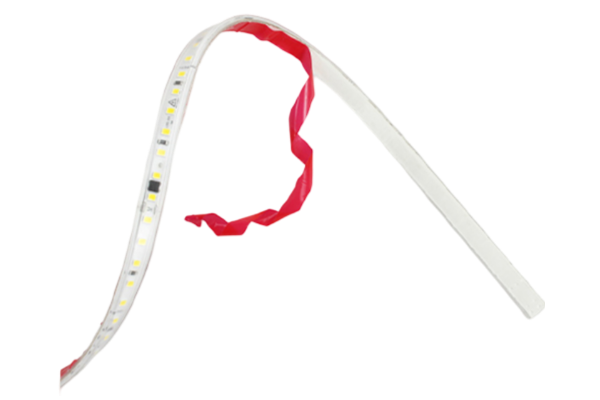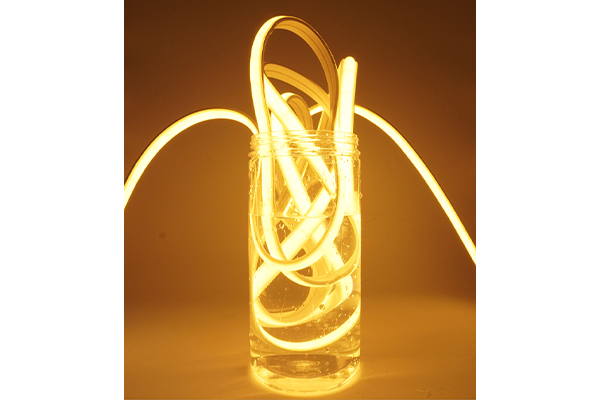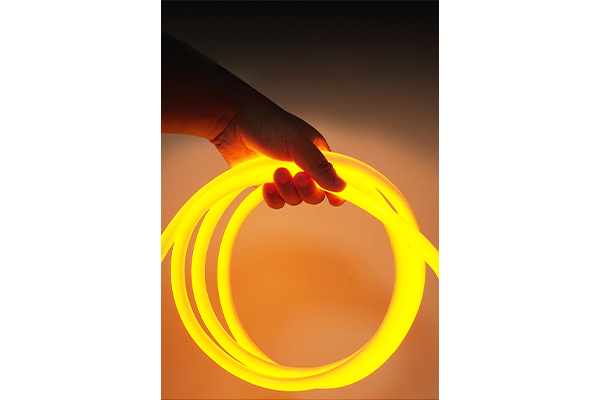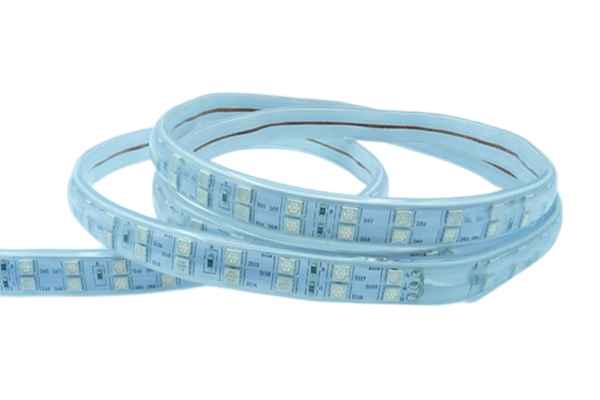How can low-voltage soft light strips illuminate the "neglected corners" of your home?
Release Time : 2025-10-10
In modern home lighting design, main lights are no longer the sole source of light. People are increasingly pursuing a light environment with rich layers, a warm atmosphere, and distinct functions. In this "light revolution," low-voltage soft light strips, with their slim, flexible, safe, low-energy consumption, and soft light, are quietly becoming a secret weapon for designers and homeowners. They don't compete for visual focus, but instead precisely illuminate those long-neglected "blind spots" and "crevices," adding depth, warmth, and practicality to a space, truly achieving the high-end lighting aesthetic of "seeing light without looking at the lamp."
1. What are "neglected corners"?
In everyday living, many spaces are overlooked by lighting systems due to their complex structure, small size, or unclear functions. Examples include: difficult access deep inside cabinets, safety hazards at the edges of stair treads, oppressive dark areas behind TV walls, difficulty identifying books between shelves, difficulty finding clothes inside wardrobes, dim and oppressive hallways, and a lack of depth in ceilings or undersides of furniture. Although small, these areas directly impact living convenience, safety, and overall ambiance. Traditional lighting fixtures, due to their bulk, difficulty in installation, and harsh lighting, struggle to effectively cover these specialized locations. Low-voltage soft light strips fill this gap.
2. Flexible Conformity: Light Follows Any Shape, Ubiquitous
The greatest advantage of low-voltage soft light strips lies in their flexibility. Typically built on an FPC substrate, they feature surface-mounted high-brightness LEDs and a silicone or PVC protective layer. They can be easily bent, folded, cut, and even wrapped around curved structures. This allows them to perfectly conform to a variety of irregular surfaces. For example, light strips can be embedded in the bottom of cabinets, distributing light evenly from top to bottom, illuminating countertops and preventing body obstruction. Light strips can be attached to the underside or edges of stair treads to create a soft, contoured light, making it easier to identify steps at night and enhancing safety. Light strips can also be installed inside bookshelves and display cabinets to highlight the texture and color of displayed items, creating a museum-like display experience.
3. Safe Low Voltage: Ideal for Wet and Children-Friendly Areas
Low-voltage soft light strips typically operate with a 12V or 24V DC power supply, far below the human safety voltage limit. Even in humid environments or with direct contact, they pose no risk of electric shock. This makes them an ideal lighting solution for wet areas such as kitchens, bathrooms, and laundry rooms. For example, installing a low-voltage soft light strip in a cabinet under a sink makes cleaning supplies easier to find. Installing a light strip inside a bathroom mirror cabinet or within a recessed recess above a shower area provides uniform, shadowless lighting, enhancing the user experience. Furthermore, their low voltage makes them suitable for families with children, preventing the safety hazards posed by curious children.
4. Concealed Installation: Aesthetics of See-Light Without Invisibility
Low-voltage soft light strips are typically only about 1 cm wide and less than 5 mm thick. Using specialized aluminum profiles or direct adhesive, they can be completely concealed in ceiling crevices, under furniture, in wall recesses, or within baseboards. The soft light spills through the crevices, creating visual effects such as floating, wall-washing, and edge-delineating, greatly enhancing the sense of depth and three-dimensionality in a space. For example, installing light strips along the edge of the living room ceiling creates a "floating ceiling" effect. Backlighting behind the TV background wall reduces the brightness contrast between the screen and the wall, alleviating visual fatigue. Light strips embedded in the ceiling or floor of hallways guide movement and enhance spatial orientation.
5. Intelligent Control: On-Demand Illumination, Energy-Saving and Highly Efficient
Modern low-voltage soft light strips are often integrated with intelligent control systems, supporting functions such as dimming, color adjustment, timing, and remote control. Users can adjust brightness and color temperature to suit different scenarios. For example, high-brightness cool white light can be used in the kitchen to enhance concentration, while low-brightness warm yellow light can be used at night to avoid glare. Control via a mobile app or voice assistant allows for convenient and energy-saving "lights on when you arrive and off when you leave." The LED light source itself has a long lifespan and low power consumption, resulting in extremely low long-term operating costs.
Low-voltage soft light strips act like a "brush" of light, quietly outlining every detail of a home space. They not only address functional issues with blind spots but also enhance the overall quality of living through the art of light and shadow. From the kitchen to the bedroom, from the stairs to the wardrobe, those once forgotten corners are reborn because of a ray of soft light.
1. What are "neglected corners"?
In everyday living, many spaces are overlooked by lighting systems due to their complex structure, small size, or unclear functions. Examples include: difficult access deep inside cabinets, safety hazards at the edges of stair treads, oppressive dark areas behind TV walls, difficulty identifying books between shelves, difficulty finding clothes inside wardrobes, dim and oppressive hallways, and a lack of depth in ceilings or undersides of furniture. Although small, these areas directly impact living convenience, safety, and overall ambiance. Traditional lighting fixtures, due to their bulk, difficulty in installation, and harsh lighting, struggle to effectively cover these specialized locations. Low-voltage soft light strips fill this gap.
2. Flexible Conformity: Light Follows Any Shape, Ubiquitous
The greatest advantage of low-voltage soft light strips lies in their flexibility. Typically built on an FPC substrate, they feature surface-mounted high-brightness LEDs and a silicone or PVC protective layer. They can be easily bent, folded, cut, and even wrapped around curved structures. This allows them to perfectly conform to a variety of irregular surfaces. For example, light strips can be embedded in the bottom of cabinets, distributing light evenly from top to bottom, illuminating countertops and preventing body obstruction. Light strips can be attached to the underside or edges of stair treads to create a soft, contoured light, making it easier to identify steps at night and enhancing safety. Light strips can also be installed inside bookshelves and display cabinets to highlight the texture and color of displayed items, creating a museum-like display experience.
3. Safe Low Voltage: Ideal for Wet and Children-Friendly Areas
Low-voltage soft light strips typically operate with a 12V or 24V DC power supply, far below the human safety voltage limit. Even in humid environments or with direct contact, they pose no risk of electric shock. This makes them an ideal lighting solution for wet areas such as kitchens, bathrooms, and laundry rooms. For example, installing a low-voltage soft light strip in a cabinet under a sink makes cleaning supplies easier to find. Installing a light strip inside a bathroom mirror cabinet or within a recessed recess above a shower area provides uniform, shadowless lighting, enhancing the user experience. Furthermore, their low voltage makes them suitable for families with children, preventing the safety hazards posed by curious children.
4. Concealed Installation: Aesthetics of See-Light Without Invisibility
Low-voltage soft light strips are typically only about 1 cm wide and less than 5 mm thick. Using specialized aluminum profiles or direct adhesive, they can be completely concealed in ceiling crevices, under furniture, in wall recesses, or within baseboards. The soft light spills through the crevices, creating visual effects such as floating, wall-washing, and edge-delineating, greatly enhancing the sense of depth and three-dimensionality in a space. For example, installing light strips along the edge of the living room ceiling creates a "floating ceiling" effect. Backlighting behind the TV background wall reduces the brightness contrast between the screen and the wall, alleviating visual fatigue. Light strips embedded in the ceiling or floor of hallways guide movement and enhance spatial orientation.
5. Intelligent Control: On-Demand Illumination, Energy-Saving and Highly Efficient
Modern low-voltage soft light strips are often integrated with intelligent control systems, supporting functions such as dimming, color adjustment, timing, and remote control. Users can adjust brightness and color temperature to suit different scenarios. For example, high-brightness cool white light can be used in the kitchen to enhance concentration, while low-brightness warm yellow light can be used at night to avoid glare. Control via a mobile app or voice assistant allows for convenient and energy-saving "lights on when you arrive and off when you leave." The LED light source itself has a long lifespan and low power consumption, resulting in extremely low long-term operating costs.
Low-voltage soft light strips act like a "brush" of light, quietly outlining every detail of a home space. They not only address functional issues with blind spots but also enhance the overall quality of living through the art of light and shadow. From the kitchen to the bedroom, from the stairs to the wardrobe, those once forgotten corners are reborn because of a ray of soft light.







